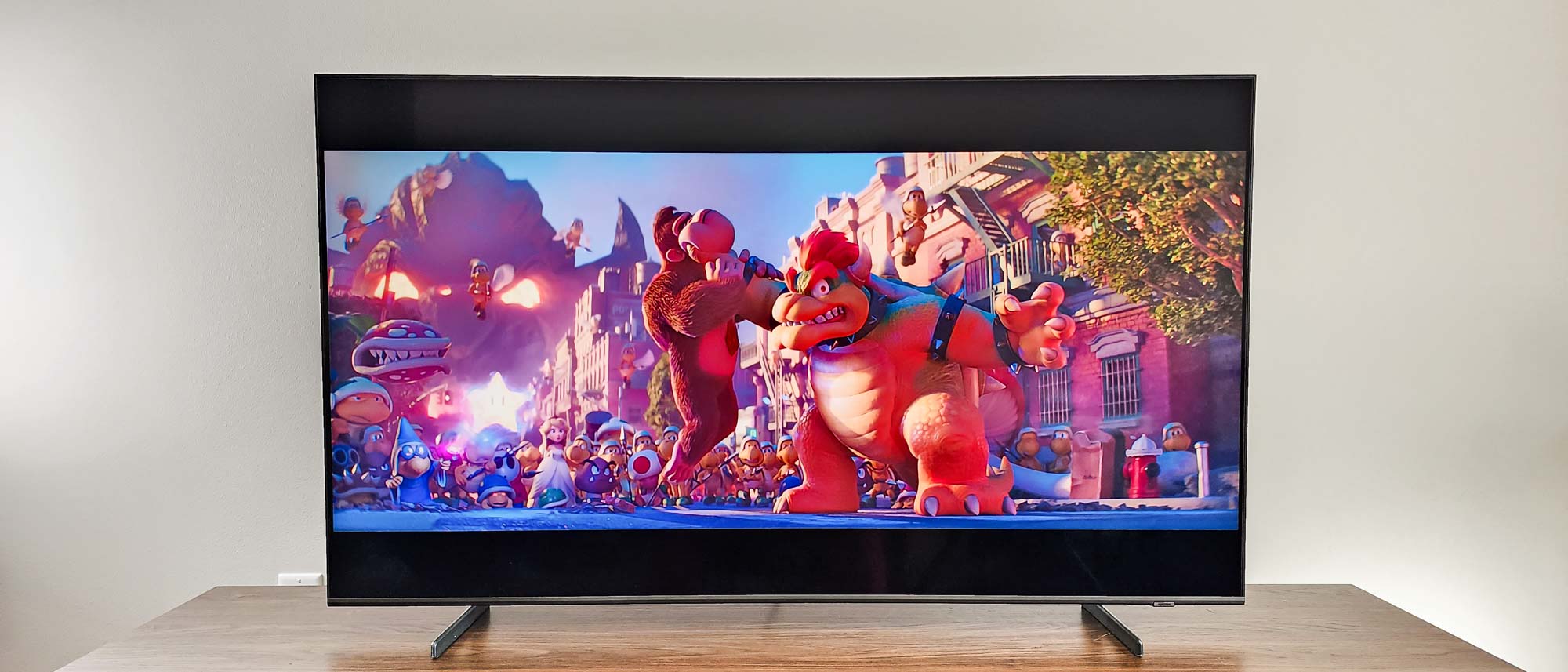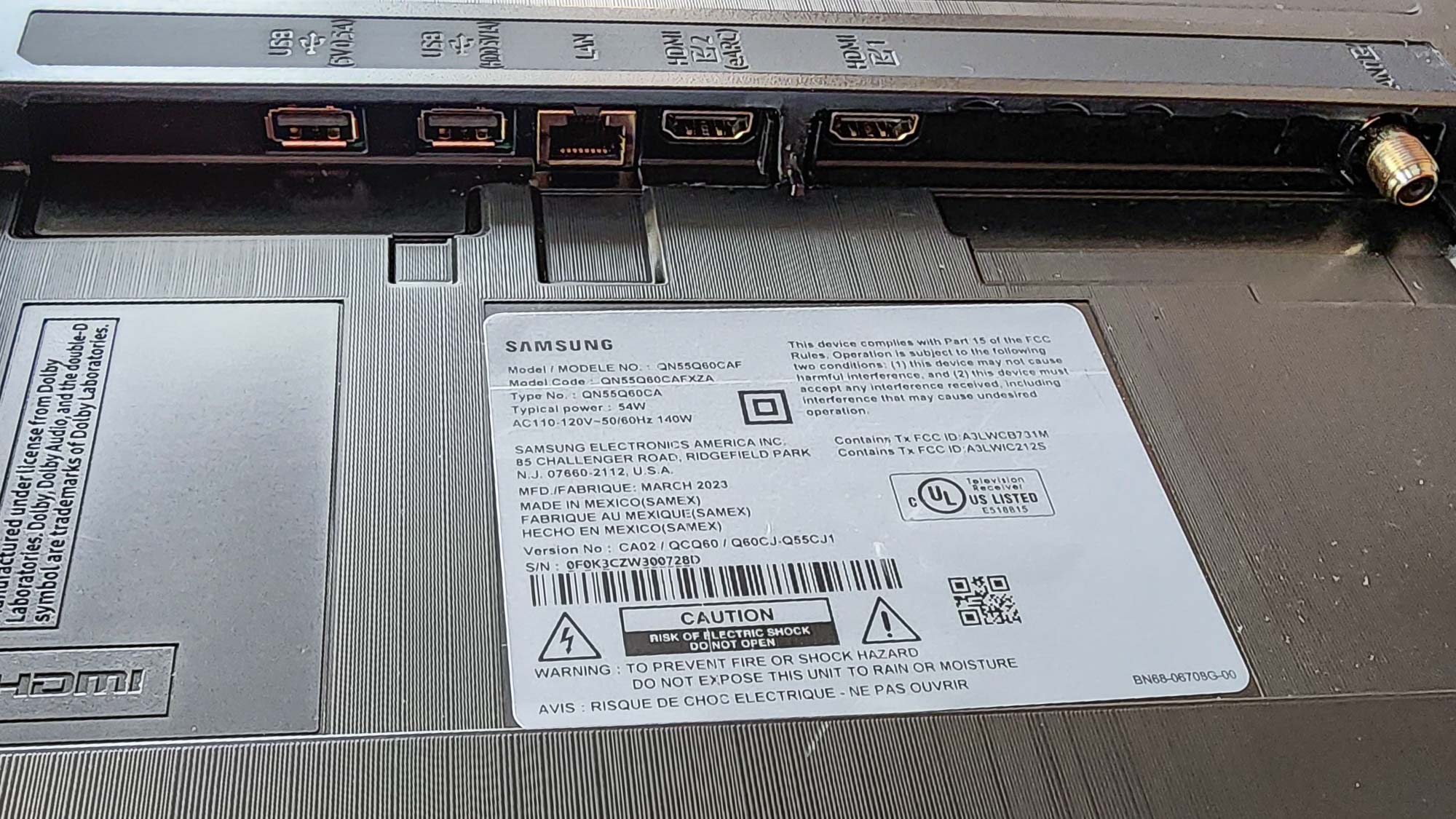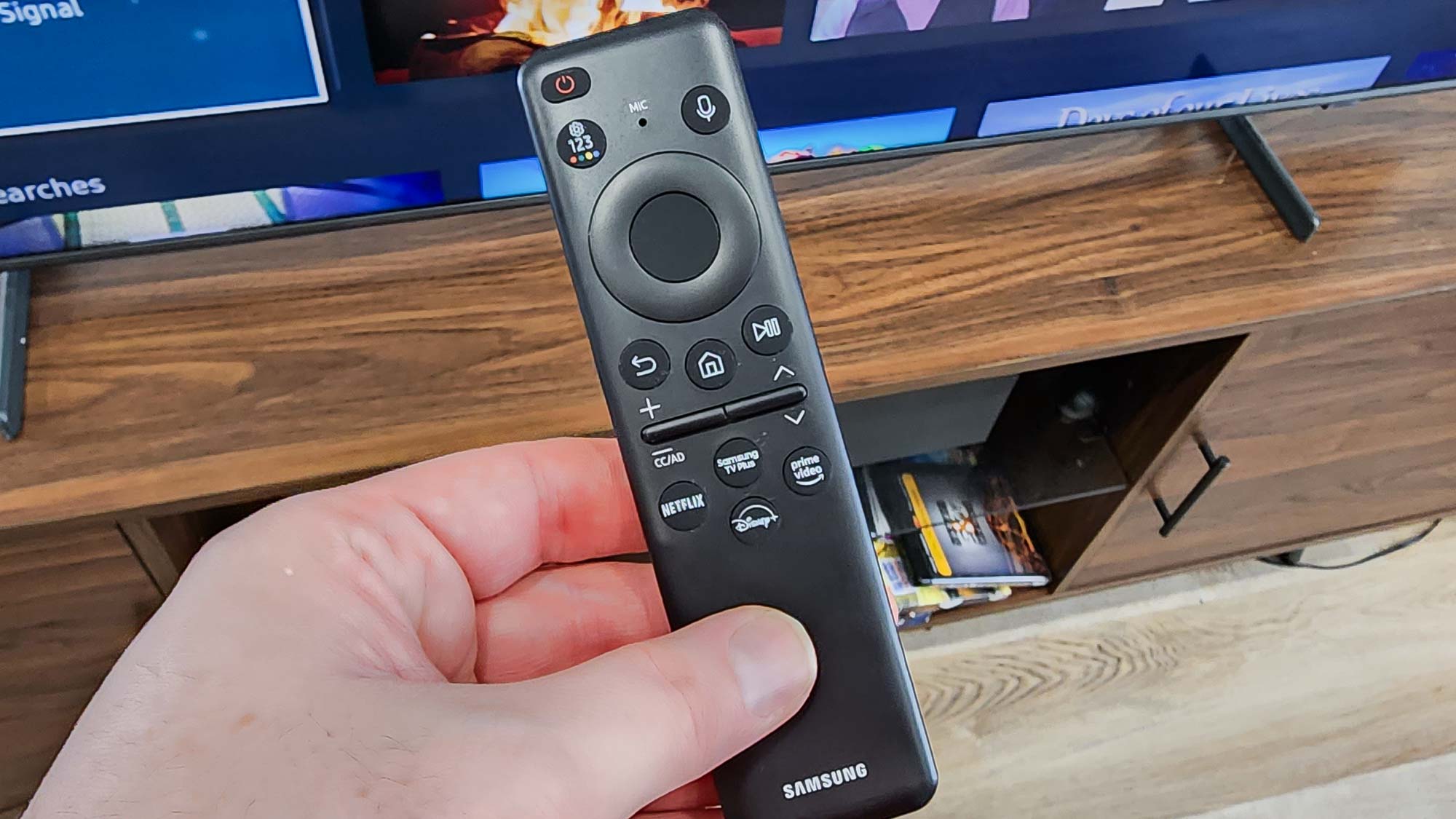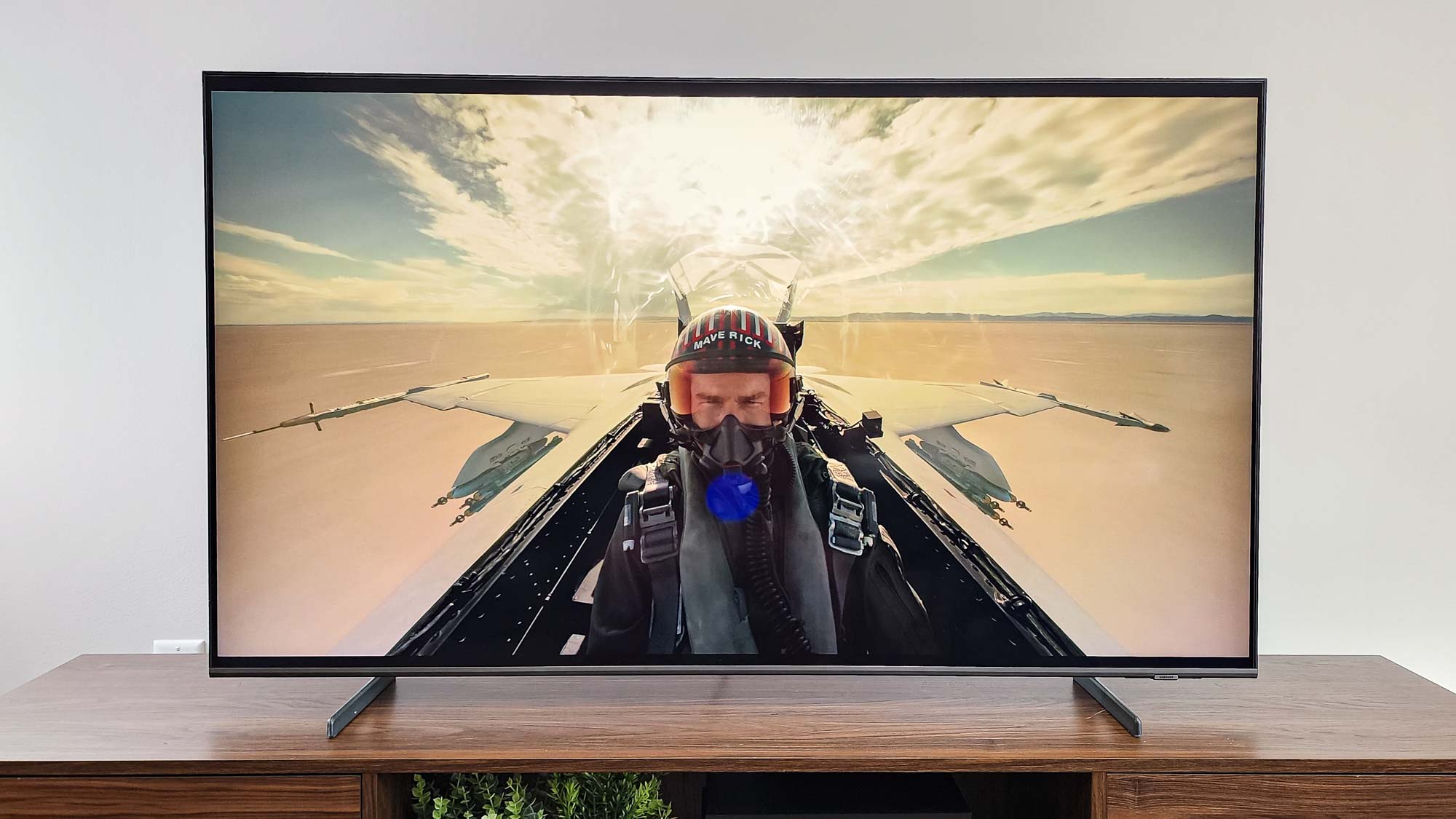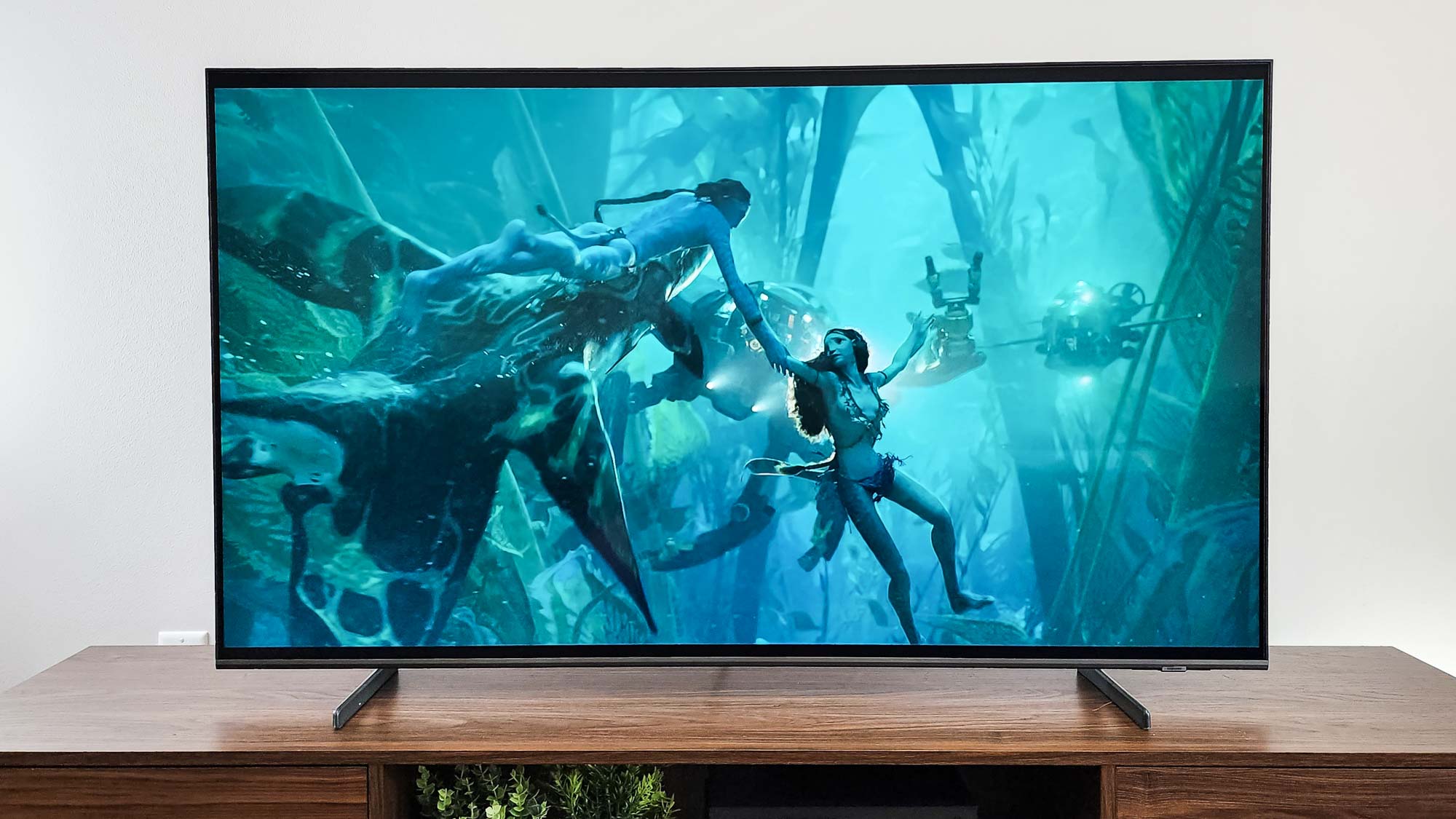Tom's Guide Verdict
With above-average color accuracy and industry-leading input lag, the Samsung Q60C is definitely worth a look. We also like the solar-charging remote. But there are brighter TVs out there that handle HDR content even better than this one.
Pros
- +
Good color handling
- +
Very low input lag
- +
Nifty remote doesn’t need batteries
Cons
- -
Lackluster brightness, color
- -
No HDMI 2.1 ports
Why you can trust Tom's Guide
Price: $799.99
Screen size: 55 inches
Model: QN55Q60CAF
Resolution: 3,840x2,160
HDR: HDR10, HDR10+, HLG
Refresh Rate: 60Hz
Ports: 3 HDMI 2.0, 2 USB
Audio: 20W
Smart TV Software: Tizen
Size: 48.5x27.9x1 inches
Weight: 34.2 pounds
The Samsung Q60C is the company’s entry-level quantum dot LED (QLED) set, so it’s important to manage your expectations: the brightness, the color vibrancy and the overall feature set (including the lack of local dimming and HDMI 2.1 support) are fine, but not ground-breaking. Most specs are average or just slightly above it.
The exception here, and why we feel the Q60C is better than the sum of its parts, is its impressively low impact lag and above-par color accuracy. Thanks to both, it acquits itself decently against other major TVs in this low price range, especially from frequent champion Hisense.
If you are looking for a secondary or tertiary set for your dedicated gaming room, guest’s or child’s bedroom, the Q60C is good enough to get the job done.
Samsung Q60C review: News and updates
Samsung has yet to announce a successor to the Q60C it debuted in 2023, but it has announced a few new upper-range models at CES 2024. Those models include the Samsung QN90D, Samsung S90D OLED and Samsung QN900D 8K TV. The Q60C is still a fantastic value at its current price, but if you want better performance it's worth checking out some of Samsung's higher-end models.
Samsung Q60C review: Pricing and availability
The Q60C is available in a wide variety of sizes designed to accommodate both your living room and your budget, whatever they may be. These are:
- Samsung QN32Q60CAF (32 inches): $499.99 | $399.99 on sale
- Samsung QN43Q60CAF (43 inches): $549.99 | $449.99 on sale
- Samsung QN50Q60CAF (50 inches): $649.99 | $529.99 on sale
- Samsung QN55Q60CAF (55 inches): $799.99 | $599.99 on sale
- Samsung QN65Q60CAF (65 inches): $999.99 | $749.99 on sale
- Samsung QN70Q60CAF (70 inches): $1,199.99 | $899.99 on sale
- Samsung QN75Q60CAF (75 inches): $1,399.99 | $999.99 on sale
- Samsung QN85Q60CAF (85 inches): $2,299.99 | $1,499.99 on sale
Though we evaluated the 55-inch version, we expect all models in the series to perform similarly. The 32-inch Q60C, however, has different design elements and fewer additional features.
Samsung Q60C review: Design, ports and remote
As befits an entry-level TV, the Q60C has a simple design that doesn’t call attention to itself, with its relatively thin screen (less than half an inch at its thinnest) being its most striking aspect. Though you can mount it on the wall using the 200x200mm VESA holes on the unremarkable rear panel, a two-piece plastic stand (that doesn’t even require screws for installation) is also included if you’d prefer to place the TV on an entertainment center.
Get instant access to breaking news, the hottest reviews, great deals and helpful tips.
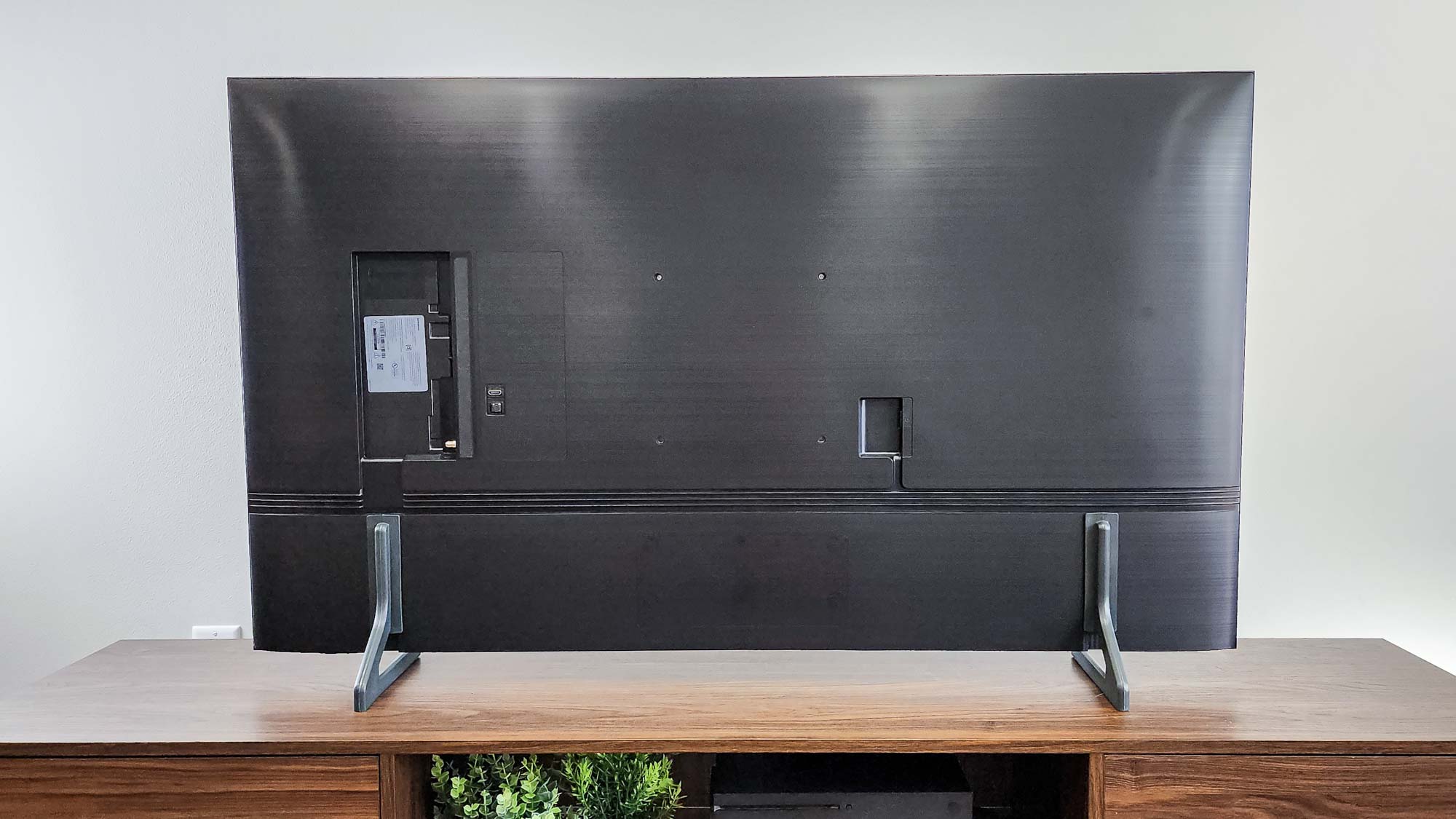
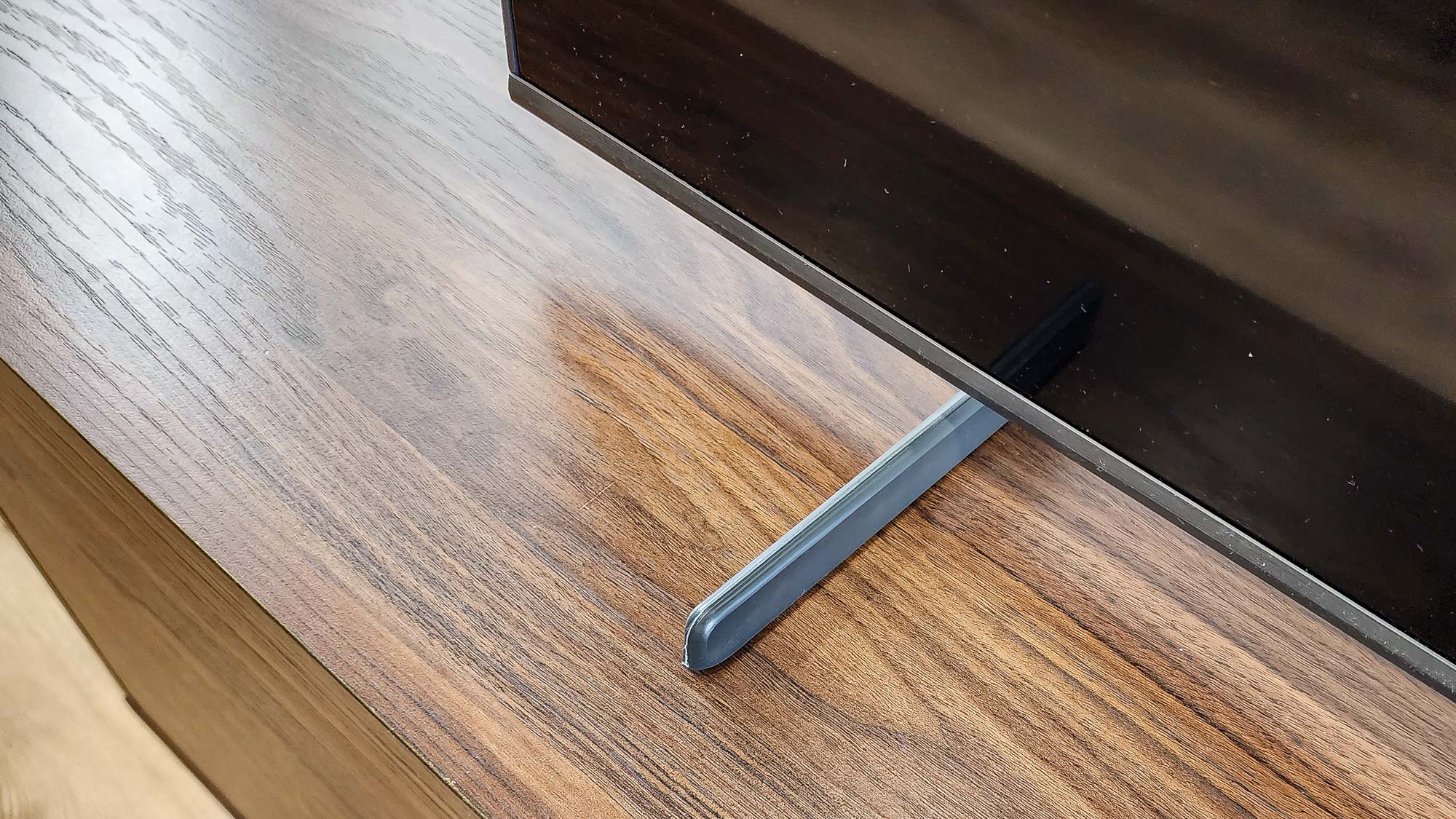
The ports on the Q60C are minimal: S/PDIF optical audio out, Ethernet, two USB, and three HDMI (two facing out the TV’s right edge, one straight back). They all support the older HDMI 2.0 standard rather than the newer and more powerful HDMI 2.1, so you won’t have access to the complete range of display and gaming features that HDMI 2.1 makes possible.
Like other Samsung TVs, the Q60C utilizes the Tizen smart interface (albeit in a slightly trimmed-down version) that makes it easy to navigate the main screen and find things to watch, though having to switch between different “apps” in order to access TV or gaming functions is a bit cumbersome. In a world of ultraslick interfaces such as Google TV and LG’s webOS, Tizen is showing its age and could definitely do with a refresh.
The Q60C’s remote, though, is top of the line in at least one way: It features a miniature solar panel on its back for recharging, so you never have to worry about swapping out batteries. The remote’s button collection is on the lean side — just 14 in total — which can make interaction with the set’s menus and features more time-consuming than with other manufacturers’ TVs. But otherwise, we’d love to see other TV makers adopt this approach.
Samsung Q60C review: How we test
For every TV we review at Tom’s Guide, we conduct a series of technical and subjective tests designed to measure the set’s performance. For our technical tests, we use an X-Rite i1 Pro spectrophotometer, a SpectraCal VideoForge Pro pattern generator, and Portrait Displays’ Calman TV-calibration software, and we add a Leo Bodnar 4K Input Lag Tester for measuring the TV’s gaming prowess. Subjective tests vary based on the reviewer, but typically include a diverse selection of movies, TV shows, and other content reflecting the types of things you may actually want to watch on the TV.
For a more detailed look at what we do and how we do it, check out our “How We Test TVs” page.
Samsung Q60C review: Performance and test results
Samsung’s ongoing commitment to color shines through with the Q60C, thanks to those quantum dots. Our tests revealed that the set covers 99.5648% of the Rec. 709 color gamut with a handsomely low Delta-E color accuracy score of 1.6547 — very much the king of the category.
Its 92.62% coverage of the UHDA-P3 HDR gamut is admirable as well, though it’s rather less impressive (and thus not as future-proofed) at handling the wider Rec. 2020 gamut, and is outshone on both by the Hisense U6K.
| Row 0 - Cell 0 | Samsung Q60C | Hisense U6K | Samsung CU8000 | Sony Bravia X75K |
| SDR Brightness (10%, in nits) | 233 | 334 | 197 | 157 |
| Delta-E (lower is better) | 1.6547 | 3.5783 | 2.1323 | 2.0027 |
| Rec. 709 Gamut Coverage | 99.5648 | 99.4728 | 98.6503 | 93.5566 |
| HDR Brightness (10%, in nits) | 356 | 525 | 233 | 295 |
| UHDA-P3 Gamut Coverage | 92.62 | 97.16 | 86.59 | 78.52 |
| Rec. 2020 Gamut Coverage | 70.35 | 72.13 | 63.13 | 57.57 |
| Input Lag (ms) | 9.0 | 10.2 | 10.2 | 9.7 |
Brightness isn’t quite as rosy, with the most accurate picture mode (Filmmaker) also the darkest by a large margin (233 nits), and even HDR doesn’t provide a significant brightness boost in any mode (356 nits), though it’s still good enough to trounce similarly priced sets aside from the U6K. The lack of local dimming only exacerbates the Q60C’s problem. For these reasons, you shouldn’t expect to be dazzled while watching most movies.
Our experience tracked with this, as titles as varied as Mission: Impossible—Dead Reckoning Part One, Top Gun: Maverick, and Dune looked okay on the Q60C but not much more than that and never really “popped.” The lower brightness also left Avatar: The Way of Water looking a little murky, like watching it through a fish tank wall in need of scrubbing, though the more openly cartoonish The Super Mario Bros. Movie looked more attractive. The 60Hz panel also muddies faster action a bit, though never too distractingly in our testing.
Sound wasn’t too bad, though. There wasn’t much bass to speak of, but both it and higher trebles remained almost entirely distortion free right up to the top of the (limited) volume range.
Gaming is a mixed bag on the Q60C. It’s hurt by the 60Hz limitation and absence of HDMI 2.1, which prevents use of Variable Refresh Rate (VRR). But its input lag of 9ms is one of the lowest we’ve seen on any TV, so you’ll never have to worry about responsiveness, and built-in Auto Low-Latency Mode (ALLM) will automatically switch the TV over to Game Mode when you plug in a console. Tizen also has a built-in Gaming Hub that collects all your apps, consoles and even music in one place, though it lacks some of the elegance of similar solutions you’ll see on other TVs.
Samsung Q60C review: Verdict
The Q60C demonstrates both Samsung’s strengths and the weaknesses that are frequently associated with lower-price TVs. There’s a lot you aren’t getting, such as HDMI 2.1 support, a fast panel, and brightness worth bragging about, and these elements may determine what you can (or should) do with the TV if you buy it. But its solid color treatment, with SDR and HDR material alike, and champion-level input lag are compelling.
In fact, they help the Q60C stand up against formidable competition from the brighter and better-at-HDR Hisense U6K and make the case for Samsung’s set as ideal for situations where you need a TV but it doesn’t have to be top-of-the-line. For this price, especially when on sale, the Q60C is an okay deal if younger viewers or gamers are in the house.
Matthew Murray is the head of testing for Future, coordinating and conducting product testing at Tom’s Guide and other Future publications. He has previously covered technology and performance arts for multiple publications, edited numerous books, and worked as a theatre critic for more than 16 years.
